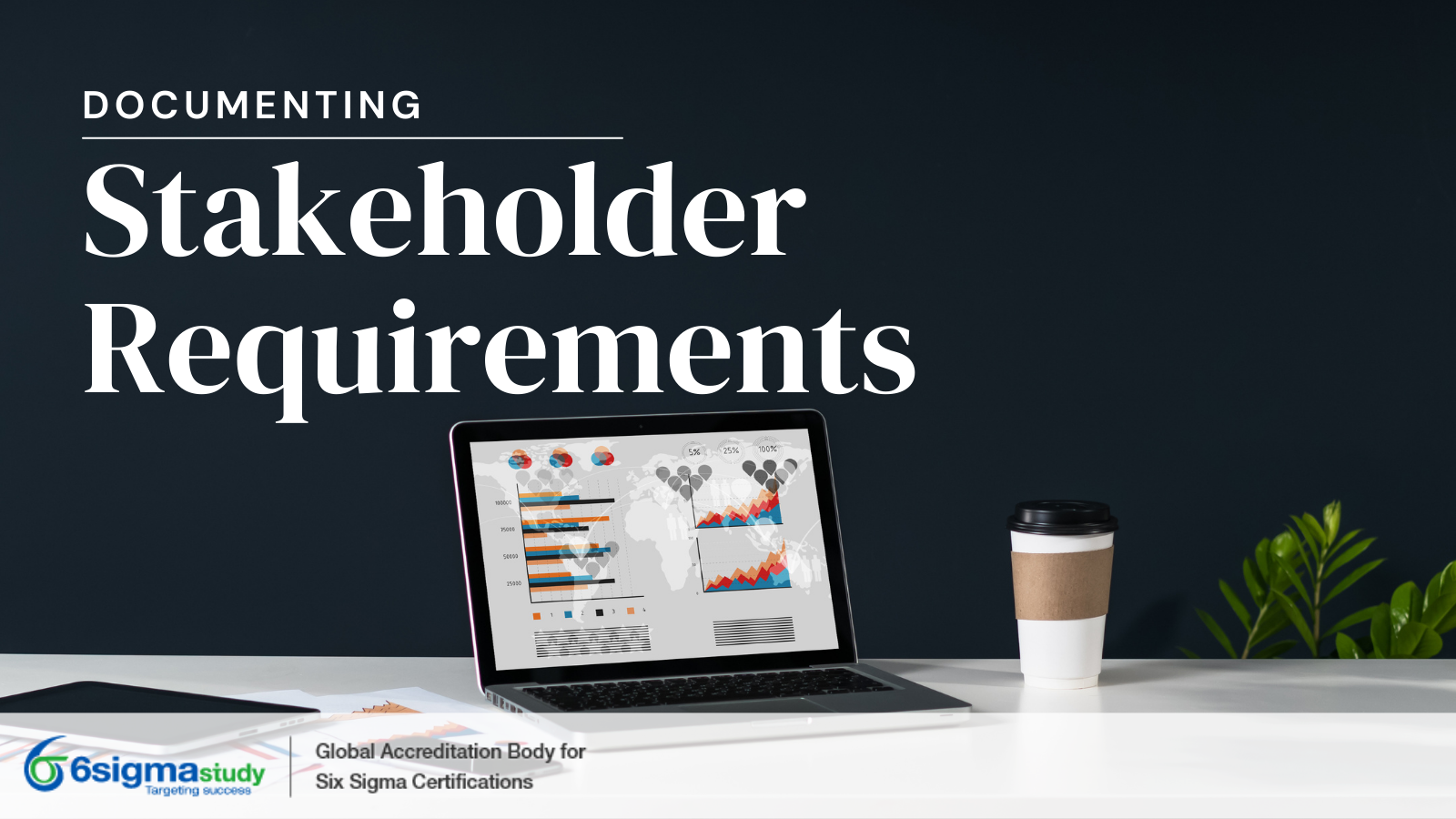Documenting Stakeholder Requirements
Posted by 6sigmastudy® on July 16, 2021 | Six Sigma Methodology
Keywords: Six Sigma 6sigmastudy Six Sigma Yellow Belt (SSYB™) Six Sigma Green Belt (SSGB™) Six Sigma Black Belt (SSBB™) Lean Six Sigma Green Belt (LSSGB™) Lean Six Sigma Black Belt (LSSBB™) Free Articles Free Six Sigma Articles TQM Six sigma stakeholder
Project stakeholders can be defined to include all groups, entities, organizations, or individuals who can affect, be affected by, or perceive themselves to be affected by a project or an initiative. Primarily there are three types of major stakeholders, namely, sponsors, users, and suppliers. Few examples of project stakeholders can include investors, analysts, developers, marketers, product owners, testers, quality assurance, etc. For an organization to successfully plan and implement a project, it is essential to understand stakeholders’ power, influence, and interests to prioritize requirements and deliver results as expected by stakeholders.
Stakeholders can be internal or external to the project. Internal Stakeholders are entities within the performing organization. They include employees, managers, labor unions, and executives. External stakeholders are entities who are from outside the organization. They can include shareholders, creditors, investors, government, vendors, government regulatory agencies, industry trade groups, NGOs and other advocacy groups, prospective employees, prospective customers, communities, and competitors.
Stakeholder engagement is critical for the successful implementation of the project. It should focus on understanding stakeholder interests and managing conflict of interest appropriately. So, stakeholder engagement should focus on the following steps.
The first step involves identifying stakeholders and understanding their requirements. The tools or techniques that can be used in this regard include but are not limited to interviews, brainstorming sessions, focus groups, requirements workshops, mind mapping, questionnaires, customer surveys, etc. The ‘Project Charter’ can be used to define high-level product requirements and expectations of stakeholders.
After collecting stakeholder requirements, the next step is documenting these requirements. Documentation depends on the project approach used. The project approach includes the methodology or framework used to deliver the project, how management and technical stages are planned and implemented per the project delivery framework used, etc. But, project documentation usually addresses the business problems, functional requirements, non-functional requirements, quality requirements, business rules, and expected project outcomes.
The next step in stakeholder engagement involves developing a plan which is focused on delivering the documented requirements. This is done by determining the necessary measures that must be taken to fulfill the said requirements of the stakeholders. A ‘Balanced Scorecard’ plays an important role in measuring the goals of different stakeholders by translating them into metrics.
There are usually two outcomes that result from the documentation and management of stakeholder requirements. The first outcome is beneficial for the ‘Project Charter’ and the second outcome helps in the project implementation plan which is the primary document used for delivering the project.
For more such articles please visit here

